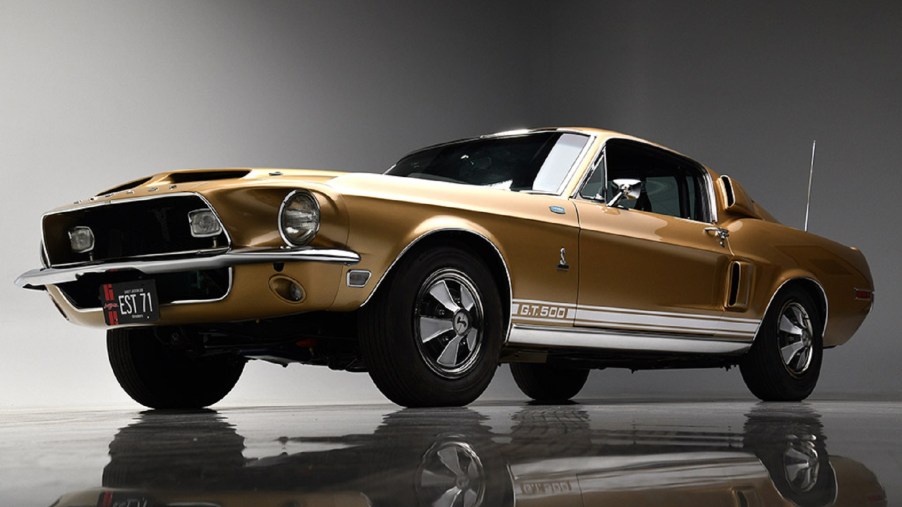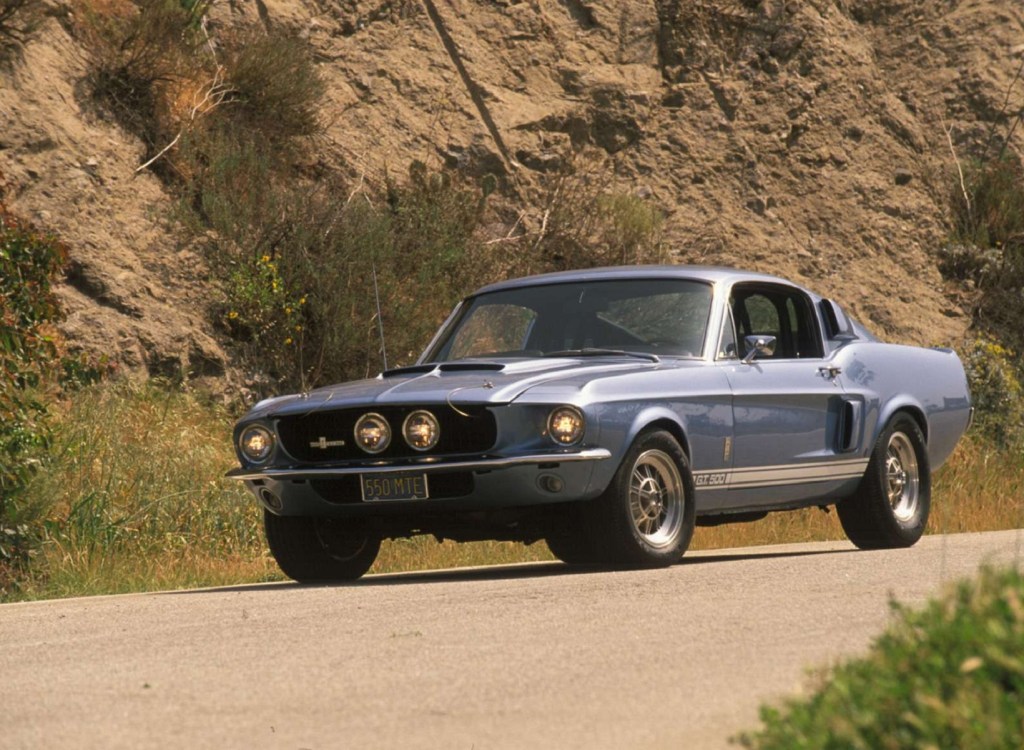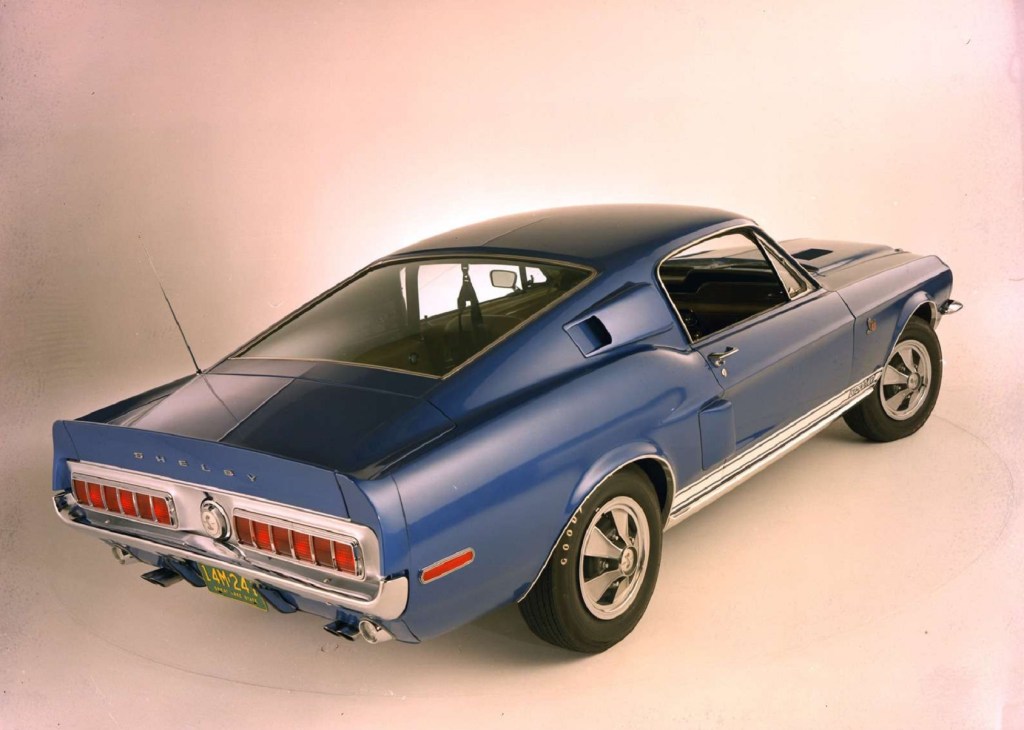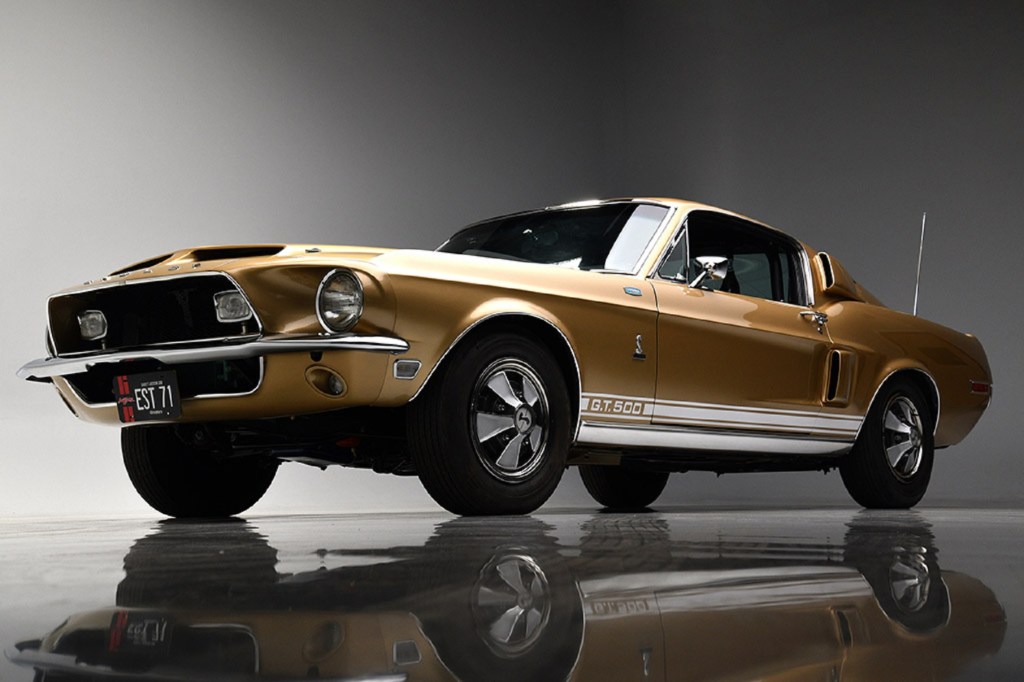
A 1-of-1 1968 Shelby GT500 Mustang Prototype Could Be Yours
While the Shelby company helped tune a lot of cars over the years, few are as well-represented as the Mustang. And though Shelby American isn’t directly involved with the modern GT500 Mustang, Carroll would likely be proud of the muscle car’s supercar-slaying performance. But while the current-gen car more than lives up to the nameplate, the original’s legacy still looms large. And now there’s a chance for you to own a genuine 1968 Shelby GT500 Mustang with a truly unique feature.
The original Shelby GT500 Mustang is practically muscle-car royalty

Today’s Shelby GT500 Mustang is significantly faster than the classic model. And in many ways, the earlier GT350 was a sharper-handling and more focused racer, MotorTrend reports. However, the GT500 still has street presence for days, with an engine to match.
The Ford Mustang had grown by 1967, both size- and weight-wise, Hagerty reports. But the Shelby GT500 countered that growth with a larger and more powerful powerplant. Under the muscle car’s hood is a 7.0-liter V8 ‘officially’ rated at 355 hp and 420 lb-ft, Car and Driver reports. However, the actual output was likely closer to 400 hp, Car and Driver reports.

To help control that power, Shelby fitted the GT500 with stiffer springs, a larger anti-roll bar, and upgraded dampers, Road & Track reports. Power-assist brakes and steering were also standard, as was a rollover bar with shoulder harness, Autoweek reports. The later GT500KR models added a front strut-tower brace. The GT500 still uses rear drum brakes, but the pad material is more fade-resistant.
Recognizing that not everyone actually wanted to drive a race car on the road, the GT500 offered optional A/C, unlike the GT350. And while a four-speed manual was standard, buyers could order their Shelby GT500 with a three-speed automatic. The manual was the performance choice, although the optional limited-slip differential was compatible with both, R&T reports.
Driving an original Shelby GT500 takes a lot of work, Automobile reports. The steering is slow, the brakes are…there, and the automatic doesn’t shift particularly smoothly. But the engine makes it a rather charismatic experience.
However, as with the earlier Cobra 427, Shelby thought the GT500 could go even further.
Shelby made several GT500 Mustang prototypes—including a fuel-injected one
Shelby tinkered several times with the GT500 Mustang’s formula.
First came the 1967 GT500 Super Snake, featuring a heavily-modified transmission and suspension setup, an oil cooler, and the 7.0-liter V8 from the Le Mans-racing GT40, Automobile reports. Instead of roughly 400 hp, the muscle car made about 600 hp, The Drive reports. Fitted with then-new Goodyear tires, Carroll himself took the car to 170 mph. A Shelby a test driver then set an average speed of 142 mph over a 500-mile oval run.
Sadly, the GT500 Super Snake was too expensive to put into production. However, Shelby American recently made a limited run of continuation cars, Autoblog reports.
But that wasn’t the last GT500 prototype. Shelby later made two ‘notchback’ prototypes, featuring experimental lighting and body-panel mods, MT reports. These prototypes, nicknamed ‘Green Hornet’ and ‘Little Red,’ also featured four-wheel disc brakes and independent rear suspension, Automobile reports. Little Red is also packing a supercharged 7.0-liter V8, Hagerty reports.
And then there’s the 1968 Shelby GT500 EFI prototype. At first, it looks like a typical classic GT500. However, besides the prototype lighting and double-scoop hood, it has a crucial upgrade under the hood, Hagerty reports. Unlike every other GT500, the 1968 EFI car doesn’t have carburetors. Instead, it has a Conelec electronic fuel-injection system, something it shares with the Green Hornet.

While that doesn’t seem strange today, an EFI system in a road-going car was almost unheard-of in the late 1960s. The first fuel-injected car, the 1955 Mercedes 300SL Gullwing, had a mechanical setup. And while Chevrolet and Pontiac briefly toyed with mechanical fuel injection systems in the ‘50s, they both dropped it before 1960. Plus, this 1968 Shelby GT500 EFI prototype scooped the standard Mustang’s EFI system by 16 years, Hagerty reports.
It’s coming up for sale
Although it’s not the only fuel-injected Shelby GT500 prototype, this 1986 car is the only fastback model. And it could be yours, because it’s coming up for auction on March 27th, 2021 at Barrett-Jackson’s Scottsdale event.
If you want it, though, be prepared to pay dearly for it. The 1967 GT500 Super Snake prototype sold for $2.2 million back in 2019, R&T reports. And the continuation cars started at almost $250k, Automobile reports.
But there is one more way to get a fuel-injected Shelby GT500 Mustang. Florida-based Revology Cars makes a replica powered by a 710-hp Roush-tuned 5.0-liter supercharged V8. And it has modern suspension, slotted-and-vented four-wheel disc brakes, and a limited-slip differential to put that power down. However, getting one still costs a pretty penny; prices start at $259,875.
Follow more updates from MotorBiscuit on our Facebook page.


